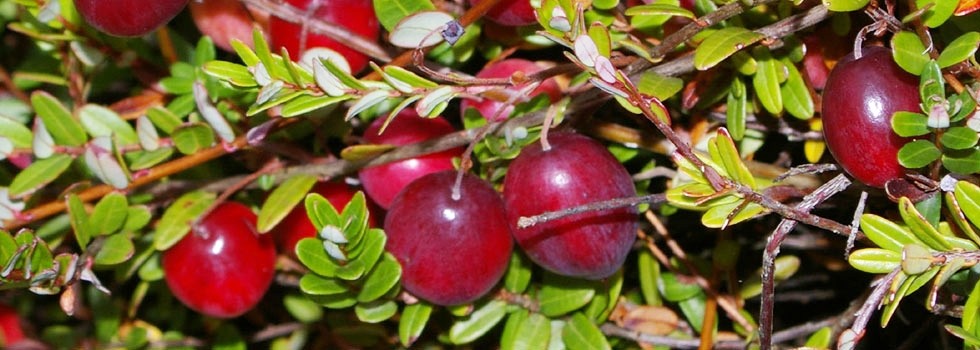Promotional Features
Cranberex, is today’s premium, clinically supported Oregon Cranberry extract
The need for natural products that support UTH continues to grow
Urinary tract infections (UTI’s) are today the most common outpatient infections in the US, and it’s estimated that they cause about 10.5 million doctor’s office visits with a cost estimated at $3.5 billion/yr [1]. Most of these cases are caused by bacteria so they are now treated with lengthy or repeated antibiotic cycles resulting in a high percentage of antibiotic resistance. Because of this, nature based, scientifically supported approaches to Urinary Tract Health (UTH) are of substantial value to a large group of people.
Cranberry’s special active ingredients: A-Type PAC’s
Research into cranberry fruits and extracts for their UTH benefits has been going on since the beginning of the 20th century, however it wasn’t until 1984 that it was first discovered that UTH benefits were due to cranberry’s ability to inhibit bacteria from adhering to the urinary tract.
Another research breakthrough was made in 1998 when Amy Howell et al published an article in the NEJM identifying Cranberry proanthocyanidins (PAC’s) as being the compounds responsible for a process of bacterial anti-adhesion activity (AAA) in the urinary tract. This process prevented the E.coli bacteria, that cause UTI’s, from adhering to the walls of the urinary tract [2].
However PAC’s are a large group of phytochemicals, responsible for the red and purple colors of fruits such as bilberry, grapes and cranberry. So the question still remained, why do PAC’s from cranberry have this unique anti-adhesion activity, but sources from other fruits do not? Also why do some cranberry-derived products seem to be effective in conferring significant UTH benefits, and others do not?
Two other studies, authored by L.Y Foo and Amy Howell, published in 2000 resolved this question. They showed that cranberry is unique in that it contains A-Type PAC’s (not found in other commonly used berries or fruits), and these are responsible for their anti-adhesion activity. Perhaps the best known of these studies linking A-Type PAC’s from cranberry to uropathogenic bacterial anti-adhesion activity was published in 2005, ‘A-type cranberry proanthocyanidins and uropathogenic bacterial anti-adhesion activity’ [3].
As this bacterial anti-adhesion mechanism does not kill bacteria, there is less chance of selection for resistant bacterial strains. This is considered as an advantage compared to antibiotics treatment for UTI’s, and in some cases may be more effective in reducing re-occurrence.
A-Type PAC’s: the effective dosage levels in Cranberex
Effective dosage levels were still in question, and in 2010 another key published study confirmed that dosage levels at 72mg A-Type PAC’s (by DMAC method) provided effective AAA over a 24-hour period.
Another multicentric, randomized, double blind clinical trial in 2017 with ENI’s Cranberex extract clearly affirmed a bacterial anti-adhesion effect in urine based upon a 36mg dosage of cranberry A-Type PAC’s (tested by DMAC method). It also found that effectiveness was dose-dependent, prolonged up to 24 hours with 72 mg of A-Type PAC’s [4]*.
How clinical dosage levels are achieved
A-Type PAC’s are only found in cranberry at low percentages of total weight. Published data from American Herbal Pharmacopoeia (AHP) showed A-Type PAC’s from different cranberry growing areas as: Oregon (70mg/100g), Massachusetts (42mg/100g) and Wisconsin (37mg/100g) [5]. This higher content of therapeutic constituents is why the source of Cranberex begins on the Oregon coastline. However, to achieve a therapeutic dosage level a high of concentration of up to 200:1 is required to bring effective products up to a true specification of 15% A-Type PAC’s (tested by DMAC method).
These levels of concentration plus the complex method required to assure levels of A-Type PAC’s are why so many cranberry products fail to achieve effective levels. For example a study done at Rutgers University in 2016 by Amy Howell compared ENI’s Cranberex with 9 other market brands; only one other brand showed any significant Anti-Adhesion Acitivity (AAA)*.
Cranberex brings The Power of Oregon Cranberry to today’s growing market
85-90% of US cranberries are grown in the Northeast, but Cranberex begins its journey on the windswept coast of Western Oregon. Extracted to a high level A-Type PAC’s (15% as tested by DMAC). Cranberex is also supported by clinical studies at Rutgers University and has played a key role in supporting UTH for over 7 years.
Cranberex is supplied through ENI’s NSF certified, solar powered facility, and is available in powder or packaged into capsules and bottles.
*For copies of these studies please contact Ethical Naturals Inc. (ENI)
[1] Medina M, Castillo-Pino E. An introduction to the epidemiology and burden of urinary tract infections. Ther Adv Urol. 2019 May 2;11:1756287219832172. doi: 10.1177/1756287219832172. PMID: 31105774; PMCID: PMC6502976.
[2] Sobota AE. J Urol 1984; 131:1013–6
[3] Foo LY, Howell AB, Vorsa N, The structure of cranberry proanthocyanidins which inhibit adherence of uropathogenic P-fimbriated Escherichia coli in vitro. Journal of Natural Products 2000, 63, 9, 1185-7
[4] Howell AB et al, A-type cranberry proanthocyanidins and uropathogenic bacterial anti-adhesion activity, Phytochemistry 66 (2005) 2281-2291
[5] American Herbal Pharmacopoeia, Cranberry Fruit, Roy Upton et al, 2016




